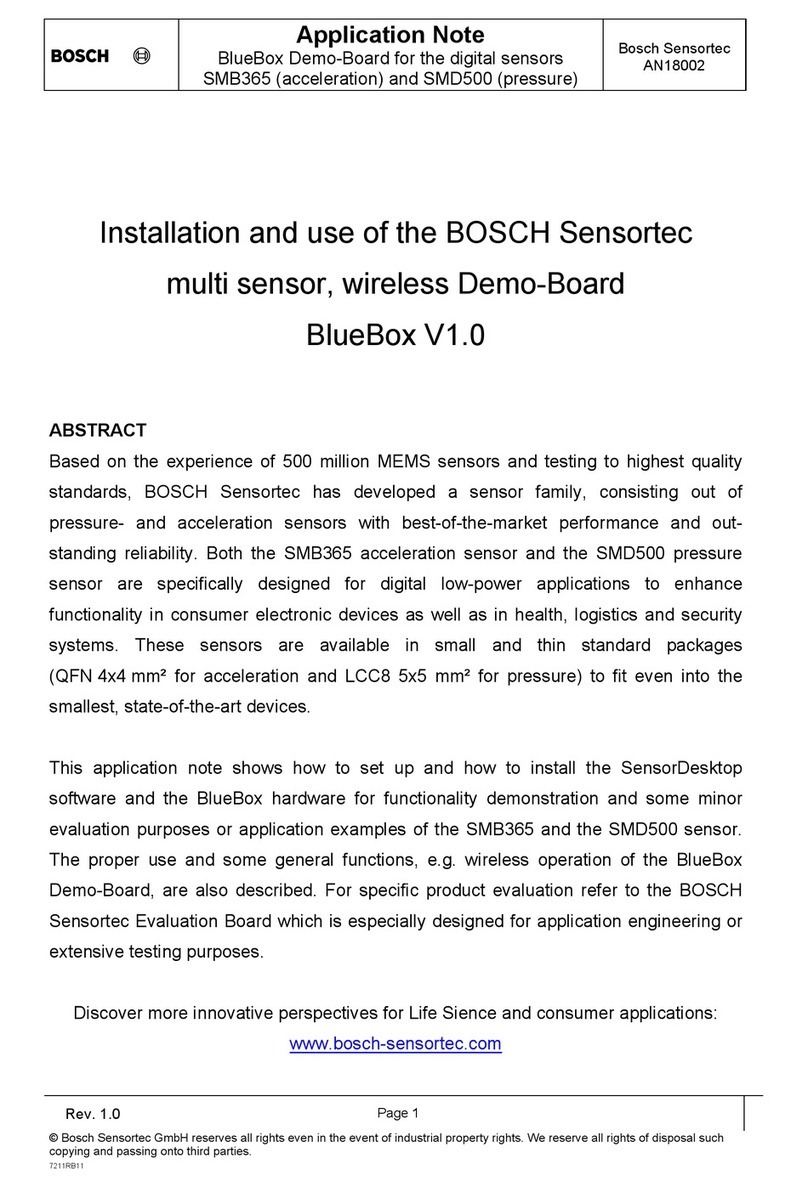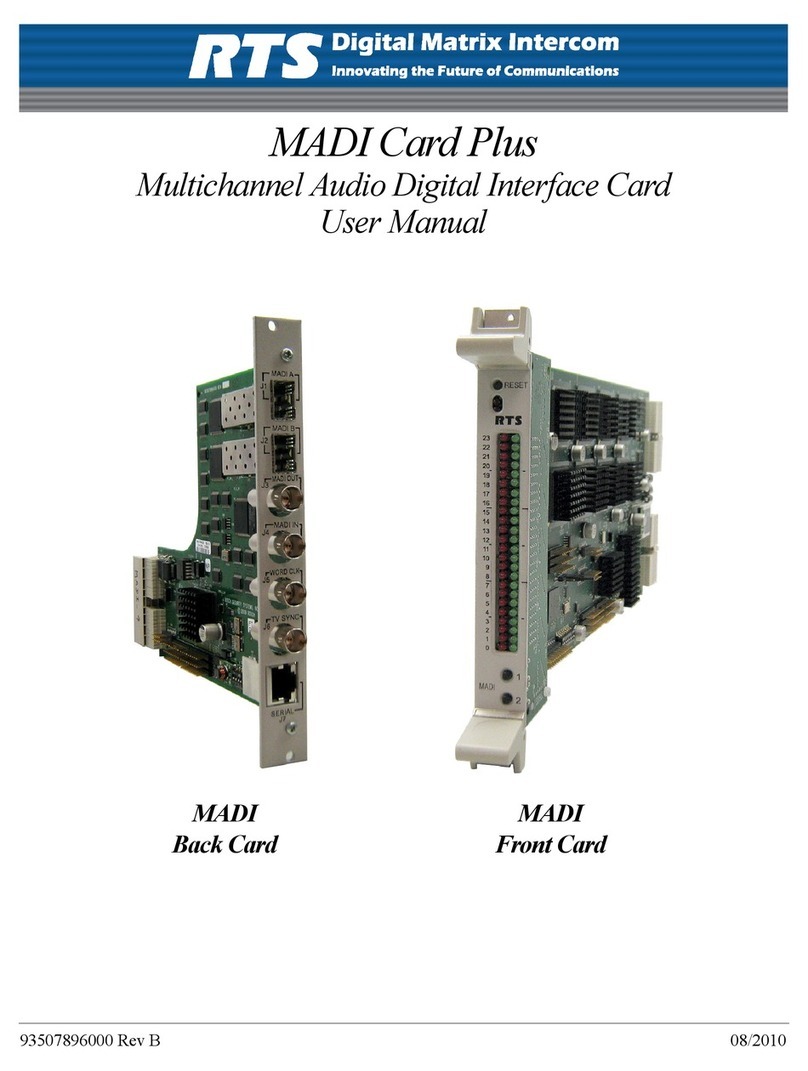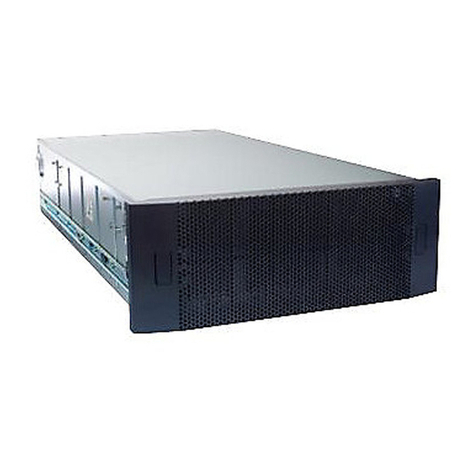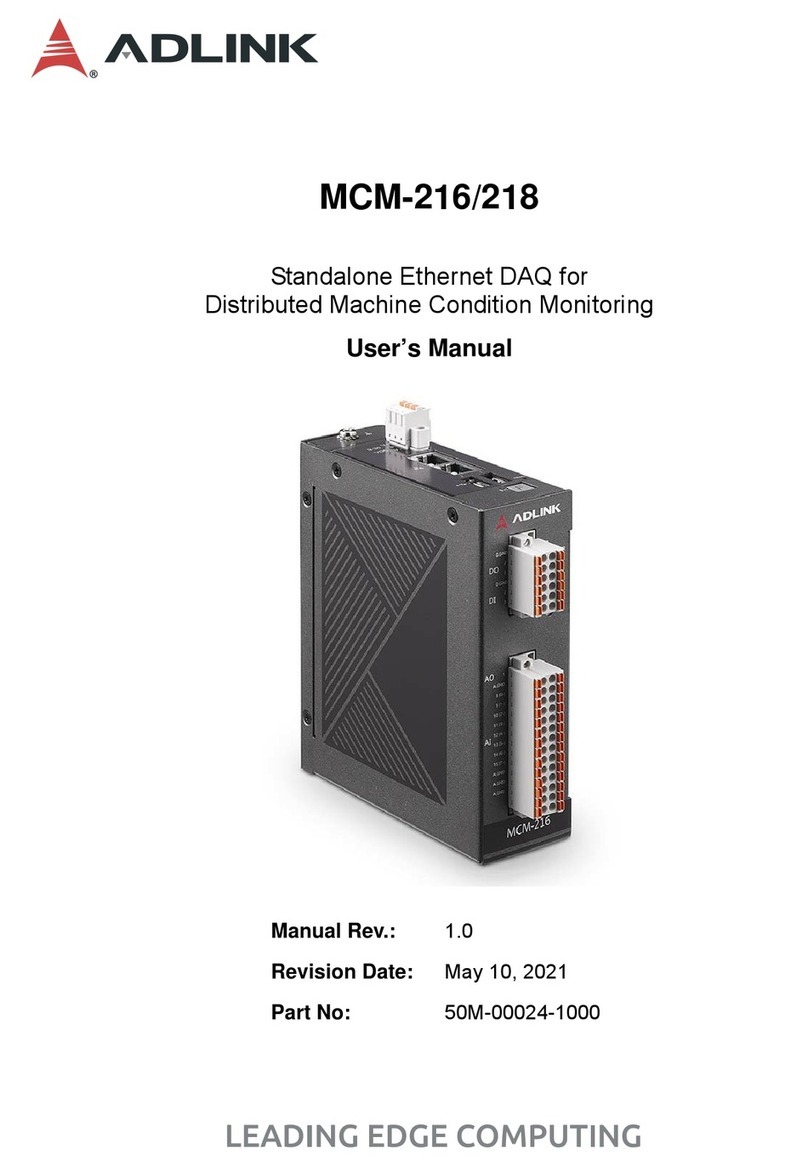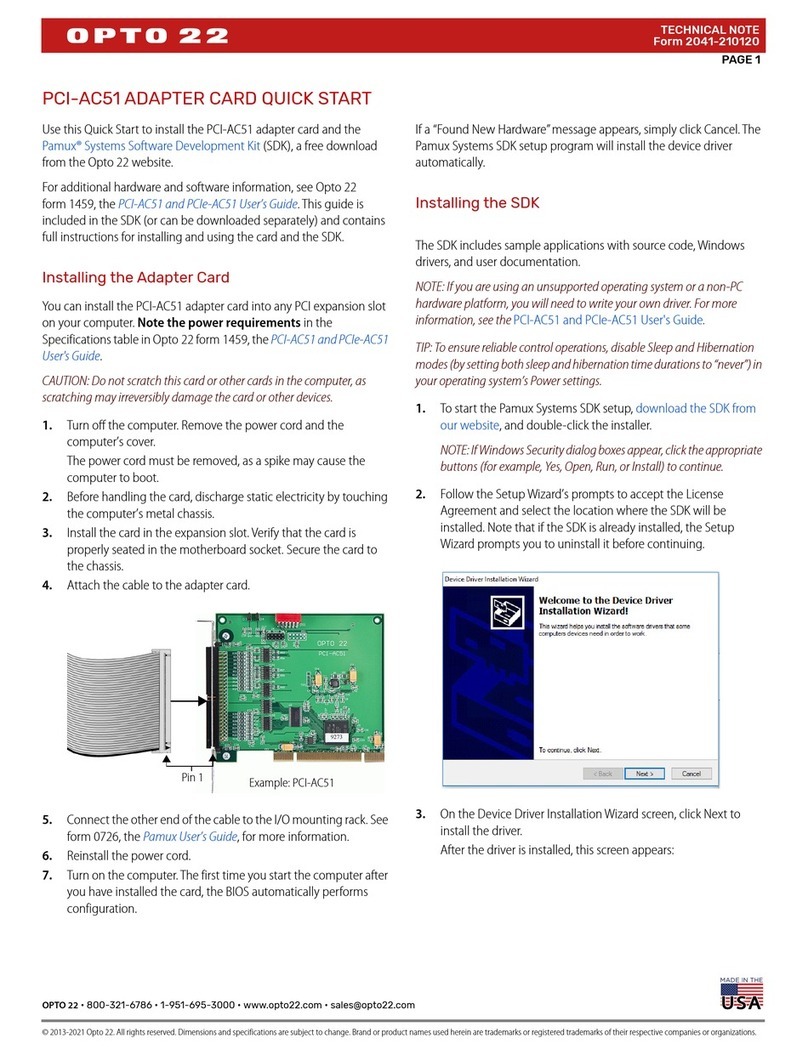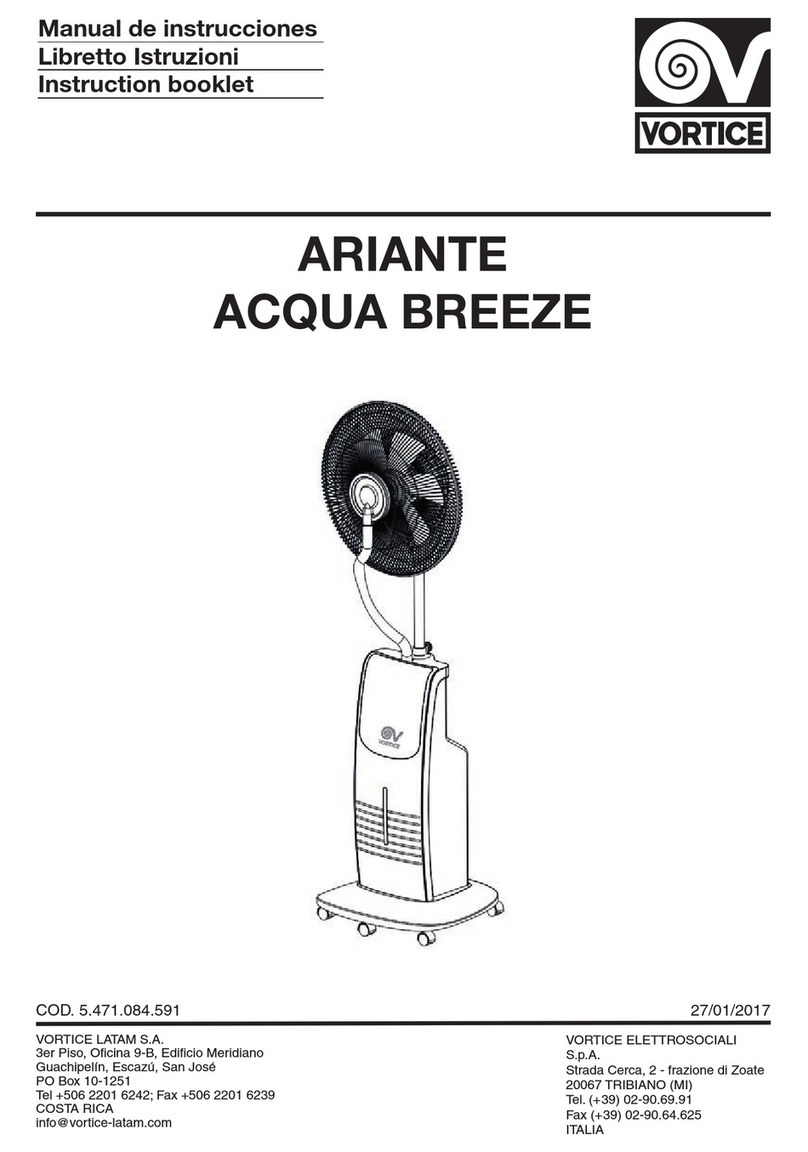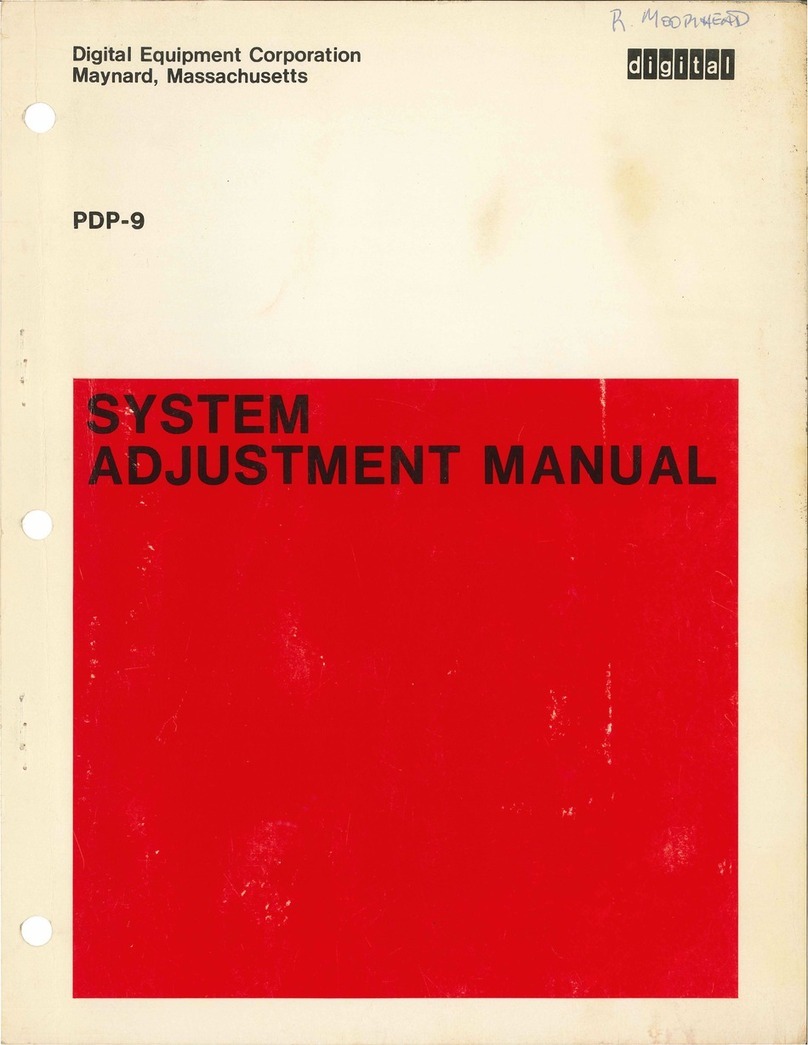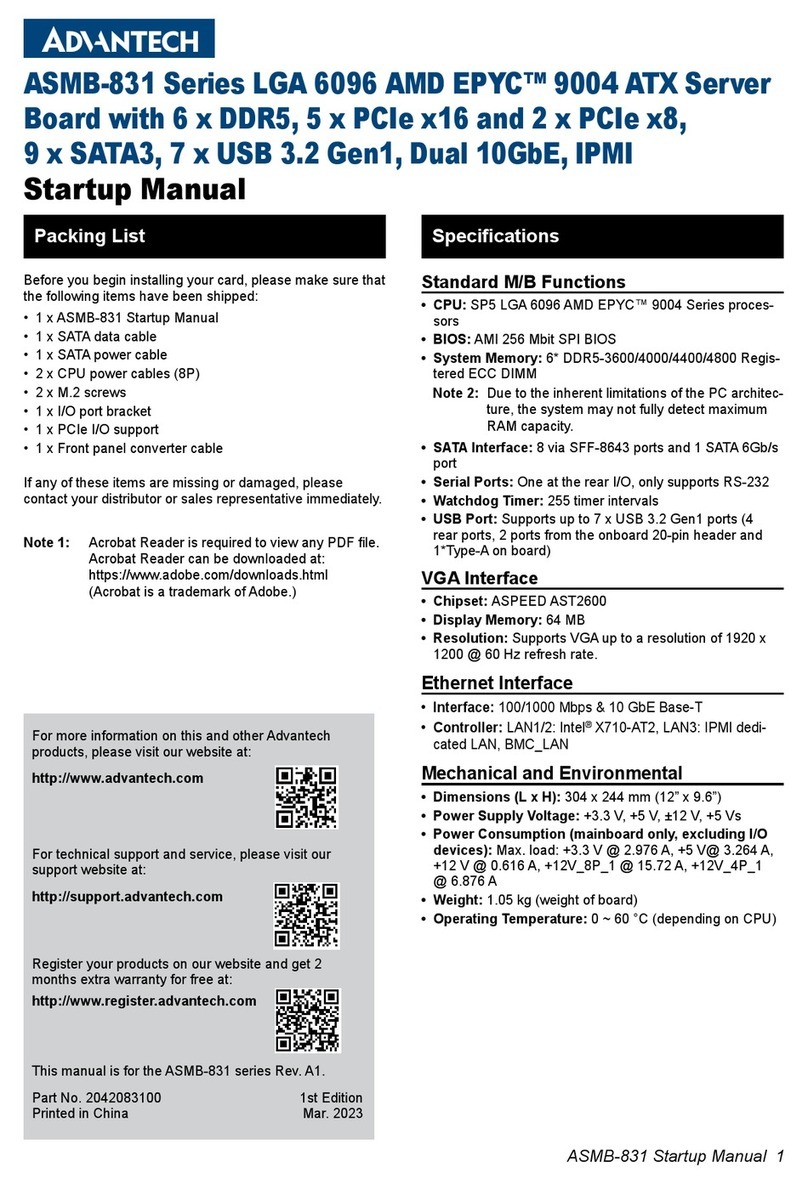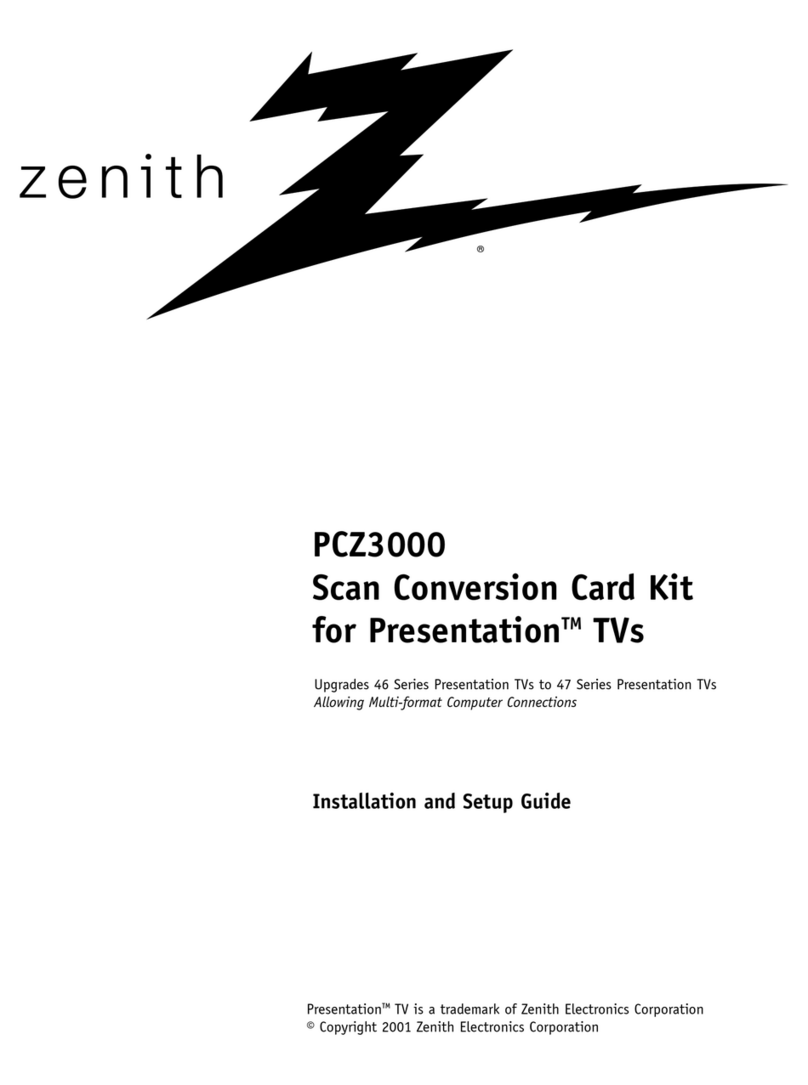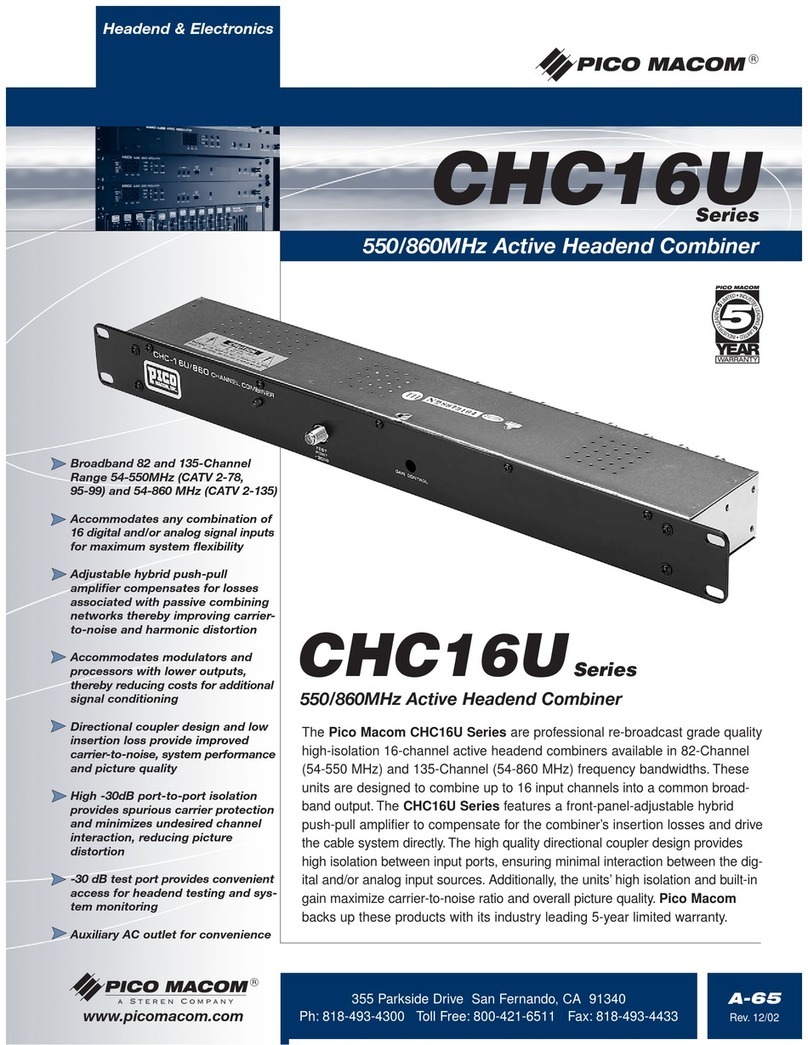Bosch D8125MUX Quick start guide

D8125MUX
EN
Operation and Installation Guide
Multiplex Bus Interface

EN | 2D8125MUX | Operation and Installation Guide | Contents
2 Bosch Security Systems, Inc. | 10/09 | F01U034973-02
Contents
Contents...........................................................................2
1.0 Introduction ......................................................3
1.1 Description..........................................................3
1.2 Programming......................................................3
1.3 Listings ................................................................3
2.0 Operation...........................................................4
3.0 Installation.........................................................4
3.1 Connecting the D5060 Programmer...............5
3.2 Programming......................................................6
3.2.1 Powering the D5060..........................................6
3.2.2 Programming Points..........................................6
3.2.3 Removing a Point from the D8125MUX.........6
3.2.4 Interrogation Mode ............................................7
3.3 Installing and Wiring the D8125MUX to the
Control Panel .....................................................7
3.4 Wiring the D8125MUX to Multiplex Points.....8
3.5 Using Power B and MUX BUS B (Optional) ..9
3.6 Wiring Multiplex Devices to the Multiplex Bus
..............................................................................9
3.7 Installing a Multiplex Device...........................10
3.7.1 Adding Multiplex Devices to the Control Panel
............................................................................10
3.7.2 Removing Multiplex Devices from the Control
Panel .................................................................10
3.8 Point Matrix Tables..........................................11
3.9 Single Input Multiplex Devices.......................18
3.10 MX250 Photoelectric Smoke Detectors and
MXB2W Base or D7050 Photoelectric Smoke
Detector and D7050-B6 Base........................19
3.11 DS7460(i) Dual Input Multiplex Module........19
3.12 DS7432 Eight Input Remote Module............20
3.13 DS7465(i) Input/Output Module.....................20
4.0 Testing the System .......................................21
4.1 Local Walk Test (Command 44)....................21
4.2 Missing Multiplex Points .................................21
4.3 Extra Multiplex Points .....................................21
4.4 Ground Fault Notification on Multiplex
Devices .............................................................21
5.0 Troubleshooting ............................................22
6.0 Specifications.................................................23
Figures
Figure 1: D8125MUX Multiplex Bus Interface
Module......................................................... 4
Figure 2: D5060 Multiplex Point Programmer ........ 4
Figure 3: Installing Multiplex Points without DIP
Switches Wiring Diagram ......................... 5
Figure 4: Installing Multiplex Points with DIP
Switches Wiring Diagram ......................... 5
Figure 5: Programmer Cables (included)................ 5
Figure 6: D8125MUX Mounting Locations.............. 8
Figure 7: D8125MUX Wiring Diagram..................... 8
Figure 8: Wiring the D8125MUX to Detection
Systems Multiplex Points.......................... 9
Figure 9: Wiring Multiplex Devices to MUX Bus .... 9
Tables
Table 1: Operation LED Descriptions..................... 4
Table 2: D5060 LED Definitions.............................. 4
Table 3: Point Type Entry Code.............................. 6
Table 4: D8125MUX Line Length ........................... 9
Table 5: Control Panel to D8125MUX Distance ... 9
Table 6: Multiplex Devices ..................................... 10
Table 7: Point Conversion Table........................... 11
Table 8: DS7457i, DS7461i, and DS7465i Switch
Settings When Using D8125MUX on
Zonex 1...................................................... 12
Table 9: DS7457i, DS7461i, and DS7465i Switch
Settings When Using D8125MUX on
Zonex 2...................................................... 14
Table 10: DS7460i Switch Settings When Using
D8125MUX ............................................... 16
Table 11: Single Input Multiplex Device Point
Response Configuration ......................... 18
Table 12: MX250, MX250TH, D7050, and D7050TH
Point Type Configuration ........................ 19
Table 13: DS7460(i) Point Type Configuration ..... 19
Table 14: DIP Switch Settings ................................. 20
Table 15: DS7432 Point Type Configuration......... 20
Table 16: DS7465(i) Point Type Configuration ..... 20
Table 17: Troubleshooting ....................................... 22
Table 18: Specifications ........................................... 23

D8125MUX |Operation and Installation Guide | 1.0 Introduction
.
Bosch Security Systems, Inc. | 9/08 | F01U034973-02 3
1.0 Introduction
1.1 Description
Use the D8125MUX Multiplex Bus Interface Module
to connect multiplex points to the zonex bus on the
following Bosch Security Systems control panels:
D9412GV2, D7412GV2, D7212GV2, D9412G,
D7412G, D7212G, D9412, D7412, D7212, D9112,
and D9124 with version 5.22 or greater firmware.
Install the D8125MUX on Zonex 1 and Zonex 2
(D9412GV2, D9412G, D9412, and D9112 only). The
multiplex bus interface supports two independent
multiplex buses; therefore, a fault on one multiplex
bus does not prevent the other from operating
normally.
The D8125MUX scans the multiplex points connected
to it and reports the points’ status to the control panel.
Point index programming then determines if the
control panel initiates an action (for example, alarm
response, trouble response, and so on).
Also available on the D8125MUX are auxiliary power
terminals labeled Power A (+,-), Power B (+,-) that
support remote devices requiring an uninterrupted
source of power.
D8125MUX is a Class B (Style 4) signaling line
circuit.
For additional D8125MUX installation information,
refer to the D9412GV2/D7412GV2 Approved
Applications Compliance Guide (P/N: F01U003639).
1.2 Programming
The D8125MUX is programmed using the D5060
Multiplex Point Programmer. The D5060 connects to
the D8125MUX PROG PORT located next to the
POWER A+ terminal. Individual point addresses and
point types are then programmed into the D8125MUX
EEPROM. In addition, the programmer must also
program each multiplex point that is connected to the
system, unless the point is equipped with
programming DIP switches. Reset pins are provided
(located above Zonex Bus Out terminal) to clear the
D8125MUX of all programmed points.
Refer to Section 3.2 Programming on page 6for
programming information.
1.3 Listings
The D8125MUX is UL Listed as a subassembly in the
following categories:
•UL 864 Control Units, System (UOJZ)
•UL1023 Household Burglar Alarm Systems
(NBSX)
•UL1610 Central Station Alarm Units (AMCX)
•UL609 Local Alarm Units (AOTX)
•UL365 Police Station Connect Alarm Units
(APAW)
•UL1076 Proprietary Alarm Units (APOU)
The D7212GV2 and D7212G are not UL
Listed for UL 864 commercial fire
applications.
Do not mix fire and non-fire products on
the same communication bus.

D8125MUX |Operation and Installation Guide | 2.0 Operation
4 Bosch Security Systems, Inc. | 10/09 | F01U034973-02
2.0 Operation
The D8125MUX continuously monitors itself for
proper operation and indicates its condition using the
green Operation LED (Figure 1). Refer to Table 1 for
a description of the Operation LED.
Figure 1: D8125MUX Multiplex Bus Interface
Module
RESET
12V IN OUT GND
ZONEX BUS FIRE MANUAL
WALK TEST PROG
PORT +- +- + - +-
POWER A MUX BUS A POWER B MUX BUS B
1
1 - Operation LED
Table 1: Operation LED Descriptions
LED Status Meaning
Flashing 1/2
second on, 1/2
second off
The D8125MUX scans its
programmed multiplex points and
operates normally.
Off A module fault is indicated. Refer
to Section 5.0 Troubleshooting on
page 22.
On The Multiplex Point Programmer
is connected to the D8125MUX.
Double flash Reset the D8125MUX EEPROM
with the reset pin by plugging in
the D5060 Programmer and
placing the shorting bar over the
reset pin. The LED rapidly flashes
twice followed by a pause.
3.0 Installation
Use the D5060 Programmer (Figure 2 and Table 2) to
program multiplex bus points for the D9412GV2,
D7412GV2, D7212GV2, D9412G, D7412G, D7212G,
D9412, D7412, D7212, and D9112 Control Panels. In
addition to programming points, the D5060 can also
be used to program and read information from a
D8125MUX.
Figure 2: D5060 Multiplex Point Programmer
EXT.
POWER SERIAL PORT MUX
POINTS
INTERROGATION MODE
ON
(HOLD)
YES NO
DOWN UP
CLEAR ENTER
OFF
(HOLD)
INTERROGATE
(HOLD)
MULTIPLEX POINT PROGRAMMER
13
456
7 8 9
*
0#
2
Table 2: D5060 LED Definitions
Display Definition
Adr Enter address.
A.dr Enter address for Interrogation Mode.
bAd Battery voltage is below 15 V.
Err Point was not programmed correctly.
Lob Battery voltage is below 16 V.
noP No response from point.
PnL Communications with the D8125 failed.
rSP Point responds to address.
tYP Enter point type.
t.YP Enter point type for Interrogation Mode

D8125MUX |Operation and Installation Guide | 3.0 Installation
.
Bosch Security Systems, Inc. | 9/08 | F01U034973-02 5
3.1 Connecting the D5060 Programmer
1. When using external power, attach the flying
leads of the included power cable to the output
terminals of a 16.5 VAC transformer. Insert the
plug end into the jack labeled EXT. POWER on
the programmer. Refer to Figure 3, Figure 4, and
Figure 5.
2. Use the serial cable provided to connect the
D8125MUX to the jack labeled SERIAL PORT on
the programmer.
3. For multiplex devices without DIP switches, use
the multiplex programmer cable provided to
connect the point to be programmed to the port
labeled MUX POINTS as shown in Figure 3. Use
the appropriate connector, either the alligator
clips or the probes, to connect the programmer to
a point.
For multiplex points with programmable DIP
switches, program the point using the DIP
switches. Connect the programmer to the
D8125MUX as shown in Figure 4.
Figure 3: Installing Multiplex Points without
DIP Switches Wiring Diagram
EXT.
POWER SERIAL PORT MUX
POINTS
INTERROGATION MODE
RES ET
12V IN OUT GND
ZONEXBUS FI RE MANU A L
WALK TE ST PROG
PORT +-+-+ -+ -
POWERA MUX BUSA POWER B MU X B US B
123
4
1 - External power
2 - D8125MUX
3 - Multiplex point without DIP switches
(non-i models)
4 - D5060 Multiplex Point Programmer
Figure 4: Installing Multiplex Points with DIP
Switches Wiring Diagram
EXT.
POWER SERIAL PORT MUX
POINTS
INTERROGATION MODE
RESET
12V IN OUT GND
ZONEXB US FIRE MANUAL
WALK T EST PROG
PORT +- +- + - +-
POWE R A MUX BU S A POWERB MUX BUS B
12
3
1 - External power
2 - D8125MUX
3 - D5060 Multiplex Point Programmer
Figure 5: Programmer Cables (included)
1
2
3
1 - C310 Serial Cable
2 - C319 External Power Supply Cable
3 - C320 Multiplex Programmer Cable

D8125MUX |Operation and Installation Guide | 3.0 Installation
6 Bosch Security Systems, Inc. | 10/09 | F01U034973-02
3.2 Programming
3.2.1 Powering the D5060
Turn on the D5060 by pressing and holding the [1]
key until the unit beeps. To turn the unit off, press and
hold the [#] and [*] keys simultaneously until the unit
beeps.
After 5 minutes of inactivity, the
programmer powers down automatically
to conserve power.
3.2.2 Programming Points
1. The D5060 shows the prompt Adr after it is
powered. This indicates that it is ready to begin
programming.
2. If the multiplex device has no DIP switches,
connect the D5060 to the point to be programmed
as shown in Figure 3 on page 5. If the mutiplex
device has DIP switches, program the device
using its DIP switches.
If the mutiplex device has no DIP
switches, connect the D8125MUX and
the mutiplex device to be programmed to
the D5060 for simultaneous programming
(Figure 3). If the mutiplex device has DIP
switches, program the device using its
DIP switches, and program the
D8125MUX using the D5060 (Figure 4 on
page 5).
3. Enter the point’s three-digit address. The address
must be between 1 and 255. Press [#].
The programmer shows tyP.
4. Enter the number corresponding to the point type
you are programming as shown in Table 3 and
press [#]. The programmer alternately shows the
address and the point type.
When you program for a mutiplex smoke
device by entering decimal value 4 or 5
Table 3, an 18-second timer starts
counting. Do not disconnect the mutiplex
smoke device until after the timer counts
down to zero.
Table 3: Point Type Entry Code
Decimal
Value
Point Type
0 Remove point from D8125MUX
1 Contact
2 Sensor (or single point module)
3 I/O module
4 Multiplex smoke without low temperature
5 Multiplex smoke with low temperature (0°C)
6 Dual point
5. Press [#] to program a point connected to the
D5060 and the D8125MUX (if connected), or
press [1] to program the D8125MUX only. If the
mutiplex device has DIP switches, program the
device using its DIP switches.
Press [*] at any time to return to a
previous step in the procedure.
6. If the point is programmed correctly, the unit
beeps once and shows Adr, indicating it is ready
to program the next point. If the point was not
programmed correctly, the unit sounds a three-
beep error tone and one of the following
messages appears:
Err: The point was not programmed correctly.
PnL: Communications with the D8125MUX
failed.
7. Press [*] to clear the entry, or press [#] to
reprogram.
If programming the D8125MUX and multiplex
device simultaneously and only one receives the
program, the D5060 shows Adr. If having
troubles with the point after installation, try
programming the D8125MUX and multiplex
devices separately.
3.2.3 Removing a Point from the D8125MUX
1. Apply power to the D5060 and connect the
programmer to the D8125MUX only.
2. Enter the address of the point you want to
remove.
3. When prompted for a point type, press [0]. Refer
to Table 3. Then press [#].
4. Press [1] to remove the point.
5. If the point is programmed correctly, the D5060
beeps once and Adr appears.

D8125MUX |Operation and Installation Guide | 3.0 Installation
.
Bosch Security Systems, Inc. | 9/08 | F01U034973-02 7
1. Align the D8125MUX with any of the three
mounting locations shown in
3.2.4 Interrogation Mode Figure 6 on page 8.
Then fasten the module with the three mounting
screws provided.
You can also use the programmer to read information
from the D8125MUX and multiplex points. Refer to
Section 3.1 Connecting the D5060 Programmer on
page 2. Remove AC and DC power from the control
panel.
5to install the D5060.
Reading Information from the D8125MUX 3. Connect 12 V from the D8125MUX to Zonex
Power +, Terminal 24, on the D9412GV2,
D7412GV2, D7212GV2, D9412G, D9412, and
D9112 (Terminal 3 on the 7412G, D7212G,
D7412, and D7212) as shown in
1. To enter Interrogation Mode, press and hold [7]
and [9] simultaneously until the unit beeps.
2. The LED marked INTERROGATION MODE
lights. Figure 7 on
page 8.
A.dr appears prompting you to enter a starting
address. 4. Connect IN on the D8125MUX to Zonex Out 1,
Terminal 28 (or Zonex Out 2 Terminal 26) on the
control panel.
3. Enter an address followed by [#].
The Interrogation LED flashes.
5. Connect OUT on the D8125MUX to Zonex In 1,
Terminal 27 (or Zonex In 2 Terminal 25) on the
control panel.
4. Press [#] to read point information from the
D8125MUX at that address.
5. Press [4] to read the previous address
information from the D8125MUX. 6. Connect GND on the D8125MUX to Zonex
Common, Terminal 23, on the D9412GV2,
D7412GV2, D7212GV2, D9412G, D9412, and
D9112 (Terminal 9 on the D7412G, D7212G,
D7412, and D7212).
6. Press [6] to read the next address information
from the D8125MUX.
If communication between the unit and 7. Connect Power A + and Power A - on the
D8125MUX to multiplex devices that require
auxiliary power. Up to 200 mA are available at
these terminals.
the D8125MUX fails, the unit sounds a
three-beep error tone and shows PnL.
7. Exit Interrogation Mode by pressing and holding
[*] until the unit beeps. 8. Connect MUX BUS A + and A - on the
D8125MUX to the positive and negative bus wires
of the multiplex points.
Reading Information from MUX Points
9. When using Loop B, connect Power B (if
applicable) and MUX BUS B on the D8125MUX
to the power and bus wires of the multiplex
points. Power B+ and B- also have up to a 200
mA capacity. Observe correct polarity.
Disconnect all multiplex points from the
D8125MUX and the multiplex bus before
reading multiplex point information.
1. To enter Interrogation Mode, press and hold [7]
and [9] simultaneously until the unit beeps. The
LED marked INTERROGATION MODE lights.
Ensure the D8125MUX is not powered
before connecting or disconnecting
multiplex devices. Connecting or
2. The display reads A.dr prompting you to enter a
starting address. Enter an address and press [#]. disconnecting a multiplex device while the
D8125MUX is powered causes the
3. Press [1]. multiplex device address setting to
4. When t.YP appears at the keypad, enter the point
type of the multiplex point as shown in reprogram or scramble.
Table 3 on
page 6and press [#].
5. If a point responds to the address, the
programmer beeps once and rSP appears. If the
point does not respond, the unit beeps three
times and the display reads noP.
6. Exit Interrogation Mode by pressing and holding
[*] until the unit beeps.
3.3 Installing and Wiring the
D8125MUX to the Control Panel
The D8125MUX is installed in the control panel
enclosure and is connected to either Zonex 1 or
Zonex 2 on the control panel.

D8125MUX |Operation and Installation Guide | 3.0 Installation
8 Bosch Security Systems, Inc. | 10/09 | F01U034973-02
Figure 6: D8125MUX Mounting Locations
1
1
1 - Module mounting location
Figure 7: D8125MUX Wiring Diagram
PERIPHERAL DEVICE WIRING
ZONEX OUT 1
ZONEX IN 1
ZONEX OUT 2
ZONEX IN 2
ZONEX POWER +
ZONEX COMMON
Operation Monitor
Pulses When Normal
Flickers When Ringing
PROG
CONN
RED
YELLOW
GREEN
BLACK
32
POWER +
DATA BUS A
COMMON
Reset Pin
Disable All Except Battery
Charging And Programming
GRN
N.F.P.A.
Style 3.5
Signaling
Line
Circuits
DATA BUS B
29
31
30
24
23
28
27
26
25
RESET
12V IN OUT GND
ZONEX BUS FIRE MANUAL
WALK TEST PROG
PORT +- +-+ - +-
POWER A MUX BUS A POWER B MUX BUS B
RESET
12V IN OUT GND
ZONEX BUS FIRE MANUAL
WALK TEST PROG
PORT +- +- + - +-
POWER A MUX BUS A POWER B MUX BUS B
1
2
3
4
1 - D9412GV2, D7412GV2, D7212GV2, D9412G,
D9412, or D9112 only.
3- When connecting the D8125MUX to a
D7412G, D7212G, D7412, or D7212, use
Terminals 3 and 9 in place of Terminals 24
and 23 respectively.
2 - The Fire Walk Test terminal does not operate on
this model.
4 - Supervised, Power Limited.
3.4 Wiring the D8125MUX to Multiplex Points
Do not use shielded or twisted pair cable.
1. Connect Power A+ and Power A- on the D8125MUX to multiplex devices that require uninterrupted
auxiliary power. Refer to Figure 8 on page 10. Up to 200 mA is available at these terminals.
2. Connect MUX BUS A+ and A- on the D8125MUX to the positive and negative bus wires of the multiplex
points. The maximum allowable current on MUX BUS A is 75 mA.

D8125MUX |Operation and Installation Guide | 3.0 Installation
.
Bosch Security Systems, Inc. | 9/08 | F01U034973-02 9
Figure 8: Wiring the D8125MUX to Detection
Systems Multiplex Points
Table 4: D8125MUX Line Length
+-+-+-+-
POWER A MUX BUS A POWER B MUX BUS B
D8125MUX
12
34
5 6 78
MUX BUS A
Maximum Wire Impedance: 33 Ω
AWG (mm) Length in Ft (m)
22 (0.8 mm) 2000 (610)*
18 (1.2 mm) 5000 (1524)*
MUX BUS B
Maximum Wire Impedance: 33 Ω
AWG (mm) Length in Ft (m)
22 (0.8 mm) 2000 (610)*
18 (1.2 mm) 5000 (1524)*
* Current requirements for multiplex points vary. The maximum
allowable distance you can locate remote points might be
reduced. Do not exceed 75 mA maximum on each MUX bus
output.
Table 5: Control Panel to D8125MUX
Distance
1 - To Loop B BUS – 5 - To Loop A BUS –
2 - To Loop B BUS +
3 - To Loop B Power –
4 - To Loop B Power +
6 - To Loop A BUS +
7 - To Loop A Power –
8 - To Loop A Power +
Maximum Impedance: 4.05 Ωat +68°F (+20°C)
nominal
Maximum Distance Size
250 ft 22 AWG
3.5 Using Power B and MUX BUS B
(Optional) 600 ft 18 AWG
76 m 0.65 mm
It might be necessary to use the Power B (+, -) and
MUX BUS B (+, -) terminals for isolation purposes.
For example, an Authority Having Jurisdiction (AHJ)
might require that fire points and burglar points be on
independent buses.
193 m 1.02 mm
Fire applications require 18 AWG.
Figure 9: Wiring Multiplex Devices to MUX
Bus
1. Connect Power B+ and Power B- on the
D8125MUX to multiplex devices that require
uninterrupted auxiliary power. Up to 200 mA is
available at these terminals.
D8125MUX
D8125MUX
1
1
2. Connect MUX BUS B + and B - on the
D8125MUX to the positive and negative bus wires
of the multiplex points. The maximum allowable
current on MUX BUS B is 75 mA.
3.6 Wiring Multiplex Devices to the
Multiplex Bus
Use one two-wire data expansion loop using MUX
BUS A, or distribute the devices on both MUX BUS A
and B. Table 4 shows the maximum distance per
MUX bus output - each D8125MUX has two multiplex
bus outputs. Table 5 shows the maximum distance
between the control panel and the D8125MUX.
Determine the required wire gauge for each multiplex
bus expansion loop (Table 4). Programming the
individual multiplex points with the D5060 assigns
them to point numbers. Daisy chain and T-tapping
configurations are acceptable. Refer to
1 - Multiplex device
Figure 9.

D8125MUX |Operation and Installation Guide | 3.0 Installation
10 Bosch Security Systems, Inc. | 10/09 | F01U034973-02
3.7 Installing a Multiplex Device 3.7.1 Adding Multiplex Devices to the Control
Panel
As shown in Table 6, several types of multiplex
devices are available. Each multiplex accessory
device is packaged with instructions connecting to the
multiplex bus output.
Table 6: Multiplex Devices
Product Point Type
Off board points for the D9412GV2, D9412G, D9124,
D9412, and D9112 are numbered 9 through 127 and
129 through 247 (D7412GV2, D7412G, D7412, and
D7212 use off board Points 9 through 75 only;
D7212GV2 and D7212G use off board Points 9
through 40 only). The D9412GV2, D9412G, D9412,
and D9112 reserves Points 128 and 248 for internal
use. The D8125MUX connected to Zonex 1 monitors
Points 9 through 127, whereas the D8125MUX
connected to Zonex 2 monitors Points 129 through
247.
DS7432 Eight Input Remote Module 6
DS7450 Flush Mount Single Multiplex
Contact Point
1
DS7452 Surface Mount Single Multiplex 1
Contact Point The D8125MUX and multiplex points
connected to Zonex 2 must be
DS7457 Single Multiplex Input Module 2
DS7460 Dual Zone Input Module 6
DS7465 Input/Output Module 3
MX775 (DS7470) Multiplex PIR Intrusion
Detector – 50 ft (15 m) Mirror
2
MX934 (DS7471) Multiplex PIR Intrusion
Detector – 35 ft (11 m) Mirror
2
MX938 (DS7472) Ceiling Mount Multiplex
PIR Intrusion Detector
2
MX540 (DS7473) Multiplex PIR Intrusion
Detector – 40 ft (12 m) Fresnel Lens
2
MX794 (DS7474) Multiplex Long Range
PIR Intrusion Detector
2
MX950 (DS7476) Multiplex
PIR/Microwave TriTech Intrusion Detector
2
MX835 (DS7477) Multiplex
PIR/Microwave TriTech Intrusion Detector
with Pet Immunity
2
MX250 Photoelectric Smoke or Photo with
Heat Detector and MXB2W Base
4
D7050/D7050TH Photoelectric or Photo
with Heat Detector and D7050-B6 Base
Lot #249 and greater
4
programmed in the D8125MUX with DIP
switches as Points 9 through 127. Refer
to Table 7 on page 11.
3.7.2 Removing Multiplex Devices from the
Control Panel
To remove a multiplex device from the system:
1. Connect the device to the D5060.
2. Enter the address.
3. Enter 0for the point type.
Ensure that the D8125MUX is not
powered before connecting or
disconnecting multiplex devices.
Connecting or disconnecting a multiplex
device while the D8125MUX is powered
causes the multiplex device address
setting to reprogram or scramble.
After any programming or hardware
change, do a functional test of the system
as required by local codes.

D8125MUX |Operation and Installation Guide | 3.0 Installation
.
Bosch Security Systems, Inc. | 9/08 | F01U034973-02 11
Table 7: Point Conversion Table
If Zonex
2 Pt. # is
Program
as
If Zonex
2 Pt. # is
Program
as
If Zonex
2 Pt. # is
Program
as
If Zonex
2 Pt. # is
Program
as
If Zonex
2 Pt. # is
Program
as
129 9 153 33 177 57 201 81 225 105
130 10 154 34 178 58 202 82 226 106
131 11 155 35 179 59 203 83 227 107
132 12 156 36 180 60 204 84 228 108
133 13 157 37 181 61 205 85 229 109
134 14 158 38 182 62 206 86 230 110
135 15 159 39 183 63 207 87 231 111
136 16 160 40 184 64 208 88 232 112
137 17 161 41 185 65 209 89 233 113
138 18 162 42 186 66 210 90 234 114
139 19 163 43 187 67 211 91 235 115
140 20 164 44 188 68 212 92 236 116
141 21 165 45 189 69 213 93 237 117
142 22 166 46 190 70 214 94 238 118
143 23 167 47 191 71 215 95 239 119
144 24 168 48 192 72 216 96 240 120
145 25 169 49 193 73 217 97 241 121
146 26 170 50 194 74 218 98 242 122
147 27 171 51 195 75 219 99 243 123
148 28 172 52 196 76 220 100 244 124
149 29 173 53 197 77 221 101 245 125
150 30 174 54 198 78 222 102 246 126
151 31 175 55 199 79 223 103 247 127
152 32 176 56 200 80 224 104
3.8 Point Matrix Tables
Only use one D8125MUX per zonex output. Refer to Table 8 beginning on page 12 for Zonex 1. Refer to Table
9beginning on page 14 for Zonex 2
If configuring the system with DS7457i, DS7461i, or DS7465i MUX devices. Refer to Table 10 on page 16 if
configuring the system with the DS7460iMUX device.
The type of multiplex device used determines the quantity of devices you can connect to the D8125MUX. Do
not program two multiplex points to the same point number. After programming all the points, perform a
Service Walk Test. Refer to the control panel’s operation and installation guide for information on the Service
Walk Test. If a multiplex point is not functioning, check for duplicate addresses.
Two sheets of peel-off labels are supplied with the D8125MUX. Each label has two parts. Place the smaller
part (with the point number) on the multiplex point. Throw away the larger part. Use the sheet marked Bank 1
for Points 9 through 127 and the sheet marked Bank 2 for Points 129 through 247. The D7412GV2,
D7212GV2, D7412G, D7212G, D7412, and D7212 Control Panels use the sheet marked Bank 1.

D8125MUX |Operation and Installation Guide | 3.0 Installation
12 Bosch Security Systems, Inc. | 10/09 | F01U034973-02
Table 8: DS7457i, DS7461i, and DS7465i
Switch Settings When Using
D8125MUX on Zonex 1
Point
(Relay)
Address
Switch Number (•= ON)
1 2 3 4 5 6 7 8
009 ••
010 ••
011 •••
012 ••
013 •••
014 •••
015 ••••
016 •
017
••
018 ••
019
•••
020 ••
021
•••
022 •••
023
••••
024 ••
025
•••
026 •••
027
••••
028 •••
029
••••
030 ••••
031
•••••
032 •
033
••
034 ••
035 •••
036 ••
Note: When using the DS7465i Input/Output Module, only
Addresses 009 through 064 support the relay option
(009 through 024 on the D7212GV2 and D7212G).
Table 8: DS7457i, DS7461i, and DS7465i
Switch Settings When Using
D8125MUX on Zonex 1 (continued)
Point
(Relay)
Address
Switch Number (•= ON)
1 2 3 4 5 6 7 8
037
•••
038 •••
039
••••
040 ••
Maximum Number of Points (D7212G)
041
•••
042 •••
043
••••
044 •••
045
••••
046 ••••
047
•••••
048 ••
049
•••
050 •••
051
••••
052 •••
053
••••
054 ••••
055
•••••
056 •••
057
••••
058 ••••
059
•••••
060 ••••
61
•••••
062 •••••
063
••••••
064 •
Note: When using the DS7465i Input/Output Module, only
Addresses 009 through 064 support the relay option
(009 through 024 on the D7212GV2 and D7212G).

D8125MUX |Operation and Installation Guide | 3.0 Installation
.
Bosch Security Systems, Inc. | 9/08 | F01U034973-02 13
Table 8: DS7457i, DS7461i, and DS7465i
Switch Settings When Using
D8125MUX on Zonex 1 (continued)
Point
(Relay)
Address
Switch Number (•= ON)
1 2 3 4 5 6 7 8
Maximum for DS7465i
065
••
066 ••
067
•••
068 ••
069
•••
070 •••
071
••••
072 ••
073
•••
074 •••
075
••••
Maximum for D7412G, D7412, and D7212
076 •••
077
••••
078 ••••
079
•••••
080 ••
081
•••
082 •••
083
••••
084 •••
085
••••
086 ••••
087
•••••
088 •••
089
••••
090 ••••
091
•••••
092 ••••
Note: When using the DS7465i Input/Output Module, only
Addresses 009 through 064 support the relay option
(009 through 024 on the D7212GV2 and D7212G).
Table 8: DS7457i, DS7461i, and DS7465i
Switch Settings When Using
D8125MUX on Zonex 1 (continued)
Point
(Relay)
Address
Switch Number (•= ON)
1 2 3 4 5 6 7 8
083
••••
084 •••
085
••••
086 ••••
087
•••••
088 •••
089
••••
090 ••••
091
•••••
092 ••••
093
•••••
094 •••••
095
••••••
096 ••
097
•••
098 •••
099
••••
100 •••
101
••••
102 ••••
103
•••••
104 •••
105
••••
106 ••••
107
•••••
108 ••••
109
•••••
110 •••••
Note: When using the DS7465i Input/Output Module, only
Addresses 009 through 064 support the relay option
(009 through 024 on the D7212GV2 and D7212G).

D8125MUX |Operation and Installation Guide | 3.0 Installation
14 Bosch Security Systems, Inc. | 10/09 | F01U034973-02
Table 8: DS7457i, DS7461i, and DS7465i
Switch Settings When Using
D8125MUX on Zonex 1 (continued)
Point
(Relay)
Address
Switch Number (•= ON)
1 2 3 4 5 6 7 8
111
••••••
112 •••
113
••••
114 ••••
115
•••••
116 ••••
117
•••••
118 •••••
119
••••••
120 ••••
121
•••••
122 •••••
123
••••••
124 •••••
125
••••••
126 ••••••
127
•••••••
128 NOT USED
Note: When using the DS7465i Input/Output Module, only
Addresses 009 through 064 support the relay option
(009 through 024 on the D7212GV2 and D7212G).
Table 9: DS7457i, DS7461i, and DS7465i
Switch Settings When Using
D8125MUX on Zonex 2
Zone
(Point)
Address
Switch Number (•= ON)
1 2 3 4 5 6 7 8
129 ••
130 ••
131 •••
132 ••
133 •••
134 •••
135 ••••
136 •
137
••
138 ••
139
•••
140 ••
141
•••
142 •••
143
••••
144 ••
145
•••
146 •••
147
••••
148 •••
149
••••
150 ••••
151
•••••
152 •
153
••
154 ••
155
•••
156 ••
157
•••
158 •••

D8125MUX |Operation and Installation Guide | 3.0 Installation
.
Bosch Security Systems, Inc. | 9/08 | F01U034973-02 15
Table 9: DS7457i, DS7461i, and DS7465i
Switch Settings When Using
D8125MUX on Zonex 2 (continued)
Zone
(Point)
Address
Switch Number (•= ON)
1 2 3 4 5 6 7 8
159
••••
160 ••
161
•••
162 •••
163
••••
164 •••
165
••••
166 ••••
167
•••••
168 ••
169
•••
170 •••
171
••••
172 •••
173
••••
174 ••••
175
•••••
176 •••
177
••••
178 ••••
179
•••••
180 ••••
181
•••••
182 •••••
183
••••••
184 •
185
••
186 ••
187
•••
188 ••
Table 9: DS7457i, DS7461i, and DS7465i
Switch Settings When Using
D8125MUX on Zonex 2 (continued)
Zone
(Point)
Address
Switch Number (•= ON)
1 2 3 4 5 6 7 8
189
•••
190 •••
191
••••
192 ••
197
••••
198 ••••
199
•••••
200 ••
201
•••
202 •••
203
••••
204 •••
205
••••
206 ••••
207
•••••
208 •••
209
••••
210 ••••
211
•••••
212 ••••
213
•••••
214 •••••
215
••••••
216 ••
217
•••
218 •••
219
••••
220 •••
221
••••
222 ••••

D8125MUX |Operation and Installation Guide | 3.0 Installation
16 Bosch Security Systems, Inc. | 10/09 | F01U034973-02
Table 9: DS7457i, DS7461i, and DS7465i
Switch Settings When Using
D8125MUX on Zonex 2 (continued)
Zone
(Point)
Address
Switch Number (•= ON)
1 2 3 4 5 6 7 8
223
•••••
224 •••
225
••••
226 ••••
227
•••••
228 ••••
229
•••••
230 •••••
231
••••••
232 •••
233
••••
234 ••••
235
•••••
236 ••••
237
•••••
238 •••••
239
••••••
240 ••••
241
•••••
242 •••••
243
••••••
244 •••••
245
••••••
246 ••••••
247
•••••••
248 NOT USED
Table 10: DS7460i Switch Settings When
Using D8125MUX
Address
Zone/Relay Switch Number (•= ON)
1 2 3 4 5 6 7 8
009/010 ••
011/012 •••
013/014 •••
015/016 ••••
017/018 ••
019/020 •••
021/022 •••
023/024 ••••
025/026 •••
027/028 ••••
029/030 ••••
031/032 •••••
033/034 ••
035/036 •••
037/038 •••
039/040 ••••
041/042 •••
043/044 ••••
045/046 ••••
047/048 •••••
049/050 •••
051/052 ••••
053/054 ••••
055/056 •••••
057/058 ••••
059/060 •••••

D8125MUX |Operation and Installation Guide | 3.0 Installation
.
Bosch Security Systems, Inc. | 9/08 | F01U034973-02 17
Table 10: DS7460i Switch Settings When
Using D8125MUX (continued)
Address
Zone/Relay Switch Number (•= ON)
1 2 3 4 5 6 7 8
061/062 •••••
063/064 ••••••
065/066 ••
067/068 •••
069/070 •••
071/072 ••••
073/074 •••
075/076 ••••
077/078 ••••
079/080 •••••
081/082 •••
083/084 ••••
085/086 ••••
087/088 •••••
089/090 ••••
091/092 •••••
093/094 •••••
095/096 ••••••
097/098 •••
099/100 ••••
101/102 ••••
103/104 •••••
105/106 ••••
107/108 •••••
109/110 •••••
111/112 ••••••
113/114 ••••
115/116 •••••
117/118 •••••
119/120 ••••••
121/122 •••••
123/124 ••••••
Table 10: DS7460i Switch Settings When
Using D8125MUX (continued)
Address
Zone/Relay Switch Number (•= ON)
1 2 3 4 5 6 7 8
125/126 ••••••
127/128 NOT USED
129/130 ••
131/132 •••
133/134 •••
135/136 ••••
137/138 ••
139/140 •••
141/142 •••
143/144 ••••
145/146 •••
147/148 ••••
149/150 ••••
151/152 •••••
153/154 ••
155/156 •••
157/158 •••
159/160 ••••
161/162 •••
163/164 ••••
165/166 ••••
167/168 •••••
169/170 •••
171/172 ••••
173/174 ••••
175/176 •••••
177/178 ••••
179/180 •••••
181/182 •••••
183/184 ••••••
185/186 ••
187/188 •••

D8125MUX |Operation and Installation Guide | 3.0 Installation
18 Bosch Security Systems, Inc. | 10/09 | F01U034973-02
Table 10: DS7460i Switch Settings When
Using D8125MUX (continued)
Address
Zone/Relay Switch Number (•= ON)
1 2 3 4 5 6 7 8
189/190 •••
191/192 ••••
193/194 •••
195/196 ••••
197/198 ••••
199/200 •••••
201/202 •••
203/204 ••••
205/206 ••••
207/208 •••••
209/210 ••••
211/212 •••••
213/214 •••••
215/216 ••••••
217/218 •••
219/220 ••••
221/222 ••••
223/224 •••••
225/226 ••••
227/228 •••••
229/230 •••••
231/232 ••••••
233/234 ••••
235/236 •••••
237/238 •••••
239/240 ••••••
241/242 •••••
243/244 ••••••
245/246 ••••••
247/248 NOT USED
3.9 Single Input Multiplex Devices
The devices listed in Table 10 reserve a single point
on the MUX bus. Single Input Multiplex points can be
programmed as Points 9 through 127 (Zonex 1) and
129 through 247 (Zonex 2) (238 devices) on the
D9412GV2, D9412G, D9412, and D9112; Points 9
through 75 (67 devices) on the D7412GV2, D7412G,
D7412, and D7212; Points 9 through 40 on the
D7212GV2 and D7212G (32 devices). When
programming the point type for Single Input Multiplex
points using a D5060 Programmer, refer to Table 11
for information on how to configure the point type.
Tamper conditions on multiplex points are treated as
Missing conditions by the control panel.
Table 11: Single Input Multiplex Device Point
Response Configuration
Device Type Point
Type
Point
Response
DS7450 Flush Mount Single
Multiplex Contact Point
1 NO
DS7452 Surface Mount Single
Multiplex Contact Point
1 NO
DS7457 Single Multiplex Input
Module
2 Configurable
(NO or NC)
MX775 (DS7470) Multiplex
PIR Intrusion Detector - 50 ft
(15 m) Mirror
2 NO
MX934 (DS7471) Multiplex
PIR Intrusion Detector - 35 ft
(11 m) Mirror
2 NO
MX938 (DS7472) Ceiling
Mount Multiplex PIR Intrusion
Detector
2 NO
MX540 (DS7473) Multiplex
PIR Intrusion Detector - 40 ft.
(12 m) Fresnel Lens
2 NO
MX794 (DS7474) Multiplex
Long Range PIR Intrusion
Detector
2 NO
MX950 (DS7476) Multiplex
PIR/Microwave TriTech
Intrusion Detector
2 NO
MX835 (DS7477) Multiplex
PIR/Microwave TriTech
Intrusion Detector with Pet
Immunity
2 NO

D8125MUX |Operation and Installation Guide | 3.0 Installation
.
Bosch Security Systems, Inc. | 9/08 | F01U034973-02 19
3.10 MX250 Photoelectric Smoke
Detectors and MXB2W Base or
D7050 Photoelectric Smoke
Detector and D7050-B6 Base
3.11 DS7460(i) Dual Input Multiplex
Module
The DS7460(i) reserves two points on the MUX bus.
Dual input multiplex points can be programmed as
Points 9 through 127 (Zonex 1) and 129 through 247
(Zonex 2) (59 per zonex, 118 modules) on
D9412GV2, D9412G, D9412, and D9112: Points 9
through 75 (33 modules) on a D7412GV2, D7412G,
D7412, and D7212; Points 9 through 40 on the
D7212GV2 and D7212G (16 modules). When
programming dual points, they occupy first an odd
point number, then an even point number. For
example, DS7460(i) Modules must be programmed to
occupy Points 9 and 10, not 10 and 11.
The MX250 and MX250TH Photoelectric Smoke
Detectors with MXB2W Base or D7050 and D7050TH
Photoelectric Smoke Detectors and D7050-B6 Base
reserve a single point on the multiplex bus. Single
input Multiplex points can be programmed as points 9
through 127 (Zonex 1) and 129 through 247 (Zonex
2) (238 smoke detectors) on a D9412GV2, D9412G,
D9124, D9412, or D9112; points 9 through 75 (67
smoke detectors) on a D7412GV2, D7412G, D7412,
and D7212; and (32 smoke detectors) points 9
through 40 on the D7212GV2 and D7212G. Other
wiring restrictions can reduce the maximum number
of photoelectric smoke detectors on the multiplex bus.
Refer to the MX250 Installation Guide (P/N: 45253)
and the D7050 Installation Instructions (P/N: 47458)
for additional information.
When using the D5060 programmer, only
program the odd or first point on the
When programming an MX250 Series or D7050
Series Photoelectric Smoke Detector and base with a
D5060 Programmer, refer to Table 12 for information
on configuring the point type.
Table 12: MX250, MX250TH, D7050, and
D7050TH Point Type Configuration
Device Type Point
Type
Point
Response
Photoelectric Smoke
Detector and Base
4 NO
The rotary address switches must be set
to the “B” range address to work with the
D8125MUX.
module. The even or second point is
automatically added.
The DS7460i cannot be used for Point 75
on the D7412GV2, D7412G, D7412, and
D7212 or for Points 127 or 247 on the
D9412GV2, D9412G, D9412, and D9112.
Failure to observe these programming
requirements will result in intermittent
missing conditions.
In addition, both points on the DS7460i must have a
Point Index assigned to it when programming the
control panel. If one of the two points is not required
on the device, simply place the 47 kΩend-of-line
(EOL) resistor on the point input terminals and
program the unused point with the same Point Index.
When programming the point type for the DS7460(i),
using the D5060 Programmer refer to Table 13 for
information on configuring the point type. Tamper
conditions on multiplex points are treated as Missing
conditions by the control panel.
Table 13: DS7460(i) Point Type Configuration
Device Type Point Type Point Response
DS7460i Dual 6 Configurable
Input Multiplex (N/O or N/C)
Module

D8125MUX |Operation and Installation Guide | 3.0 Installation
20 Bosch Security Systems, Inc. | 10/09 | F01U034973-02
3.12 DS7432 Eight Input Remote Module
This device type reserves eight points on the
multiplex bus. Each D8125MUX supports fifteen
DS7432s on the D9412GV2, D9412G, D9412, and
D9112 Control Panels, up to eight on the D7412GV2,
D7412G, D7412, and D7212 Control Panels, and up
to four on the D7212GV2 and D7212G Control
Panels. The DS7432s occupy groups of eight points;
however, when programming the DS7432 with the
multiplex point programmer, program them as four
sets of dual points. For example, if using a DS7432
on the system for Points 9 through 16, program
Points 9, 11, 13, and 15 as dual points with the even
points being added automatically. Program starting
point locations for the DS7432 on the D9412GV2,
D9412G, D9412, and D9112 Control Panels as
follows: 9, 17, 25, 33, 41, 49, 57, 65, 73, 81, 89, 97,
105, 113, 121. Refer to Table 14.
Table 14: DIP Switch Settings
DIP Switch
Zonex 1/
Zonex 2
1 2 3 4 5
9/129 Open Open Open Open Closed
17/137 Open Open Open Closed Open
25/145 Open Open Open Closed Closed
33/153 Open Open Closed Open Open
41/161 Open Open Closed Open Closed
49/169 Open Open Closed Closed Open
57/177 Open Open Closed Closed Closed
65/185 Open Closed Open Open Open
73/193 Open Closed Open Open Closed
81/201 Open Closed Open Closed Open
89/209 Open Closed Open Closed Closed
97/217 Open Closed Closed Open Open
105/225 Open Closed Closed Open Closed
113/233 Open Closed Closed Closed Open
121/241 Open Closed Closed Closed Closed
Points 127/128 and 247/248 cannot be
programmed when using DS7432s
(D9412GV2, D9412G, D9412, or D9112).
Program starting point locations for the DS7432 on
the D7412GV2, D7412G, D7412, D7212 as follows:
9, 17, 25, 33, 41, 49, 57, and 65. Program starting
point locations for the DS7432 on the D7212GV2 and
D7212G as follows: 9, 17, 25, and 33. Failure to
observe this programming requirement will result in
intermittent missing conditions. All eight points on the
DS7432 must also have a Point Index assigned to
them. If any of the eight point inputs are not required
on the device, place the 47 kΩEOL resistor on the
point input terminals. Refer to Table 15 for
information on configuring the point type. Tamper
conditions on multiplex points are treated as Missing
conditions by the control panel. Removing the cover
and activating the tamper results in a missing
condition for all eight points.
Table 15: DS7432 Point Type Configuration
Device Type Point Type Point Response
DS7432 Eight Input 6 Configurable
Remote Module (NO or NC)
3.13 DS7465(i) Input/Output Module
This device type reserves a single point on the MUX
bus and provides a Form C (NO, C, NC) relay output.
The relay output number assigned to this module is
the same as the point number assigned to it. For
example, if this device was programmed as Point 27,
the relay number is also 27.
The relay output on this module is a fully
programmable relay and follows the relay
programming of the control panel.
The maximum number of DS7465i Modules that can
be placed on the control panels is 56 as points 9
through 64 for the D9412GV2, D7412GV2, D9412G,
D7412G, D9412, D7412, D7212, and D9112; and 16
as points 9 through 24 for the D7212GV2 and
D7212G. Place the DS7465(i) on the D8125MUX
connected to Zonex 1.
If only the relay is required for the installation, assign
a Point Index for the programmed point location, and
place a 47 kΩEOL resistor on the point input
terminals. Refer to Table 16 for point type
configuration.
Table 16: DS7465(i) Point Type Configuration
Device Type Point Type Point Response
DS7465(i) Input/Output 3 Configurable
Module (NO or NC)
Tamper conditions on multiplex points are treated as
Missing conditions by the control panel. Using
DS7465i Input and Output Modules on the system
does not interfere with the use of D8129 OctoRelay
Modules.
Other manuals for D8125MUX
1
Table of contents
Other Bosch Computer Hardware manuals
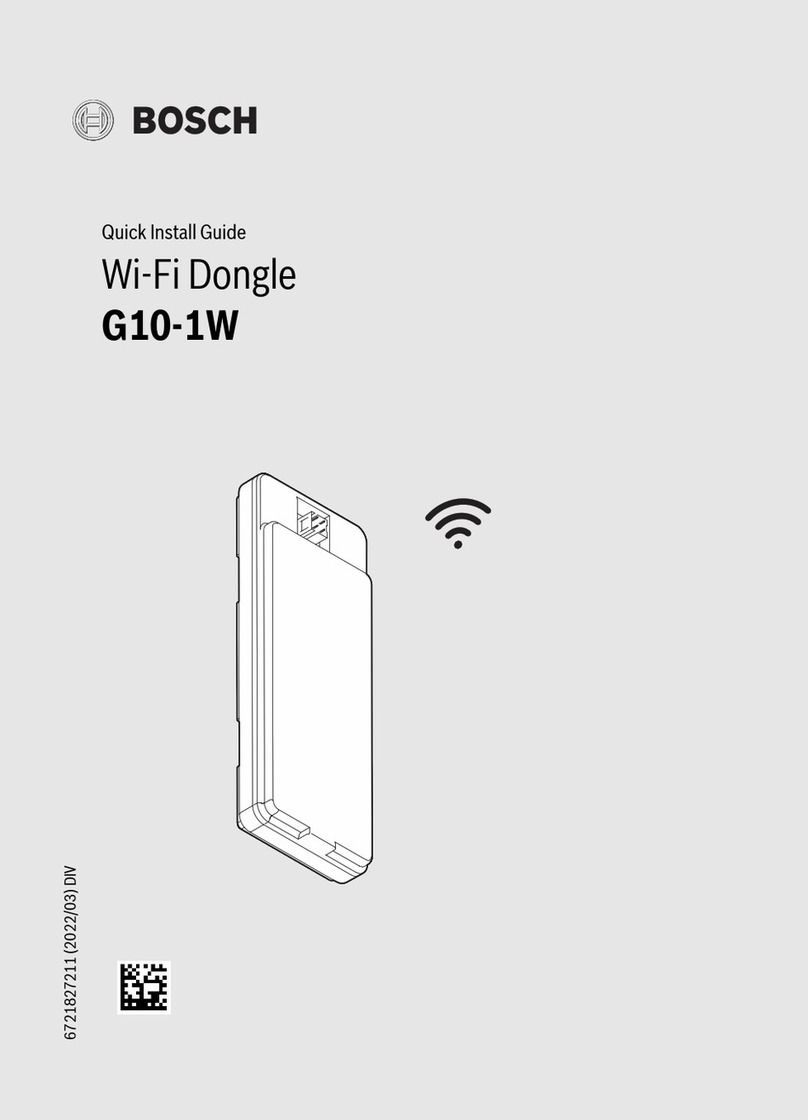
Bosch
Bosch G10-1W User manual
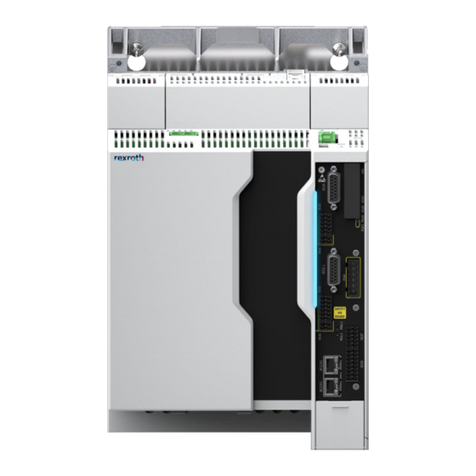
Bosch
Bosch Rexroth IndraDrive X User manual

Bosch
Bosch CM704B How to use
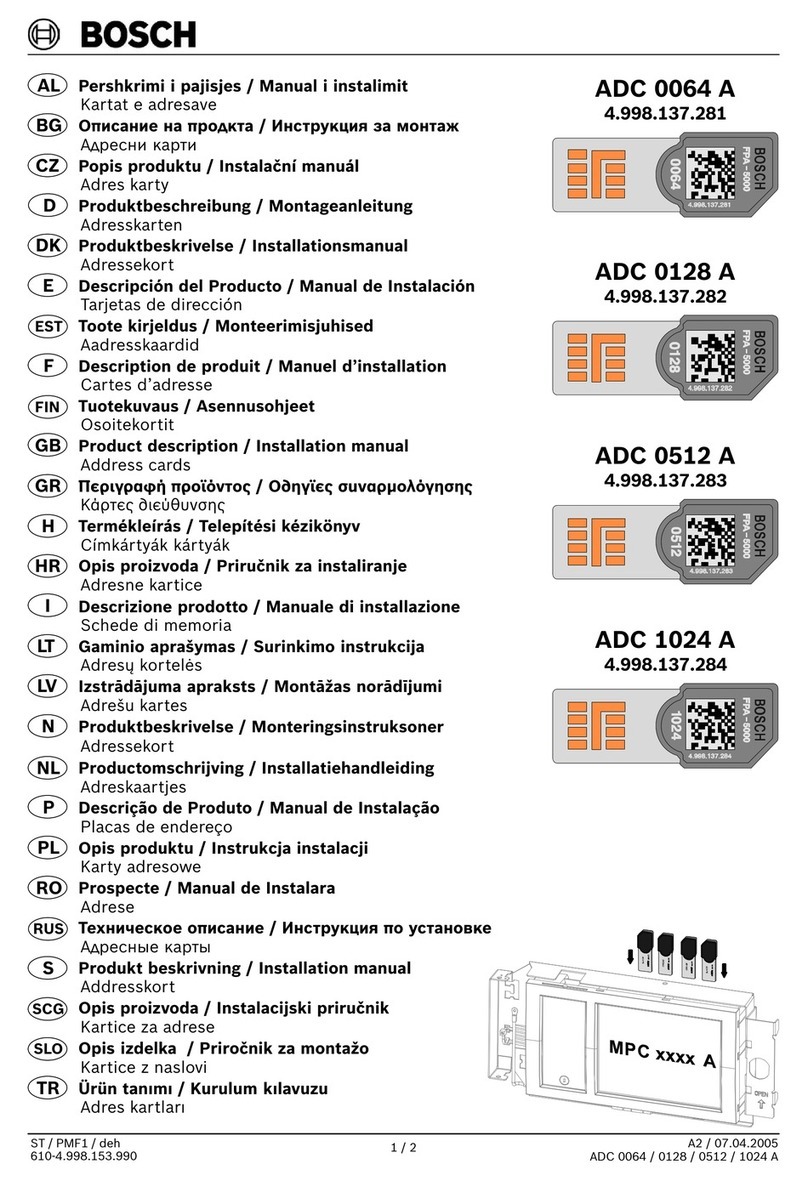
Bosch
Bosch ADC 0064 A User manual
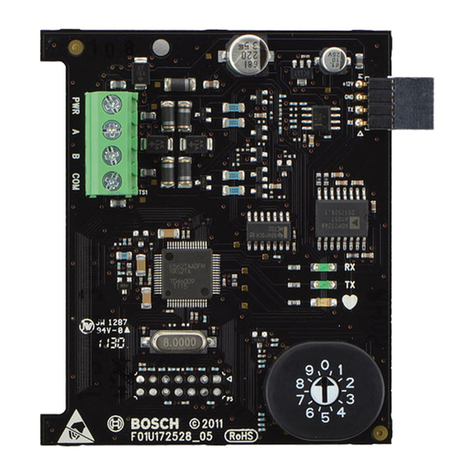
Bosch
Bosch B820 User manual

Bosch
Bosch CL300 User manual

Bosch
Bosch D5370-USB User manual
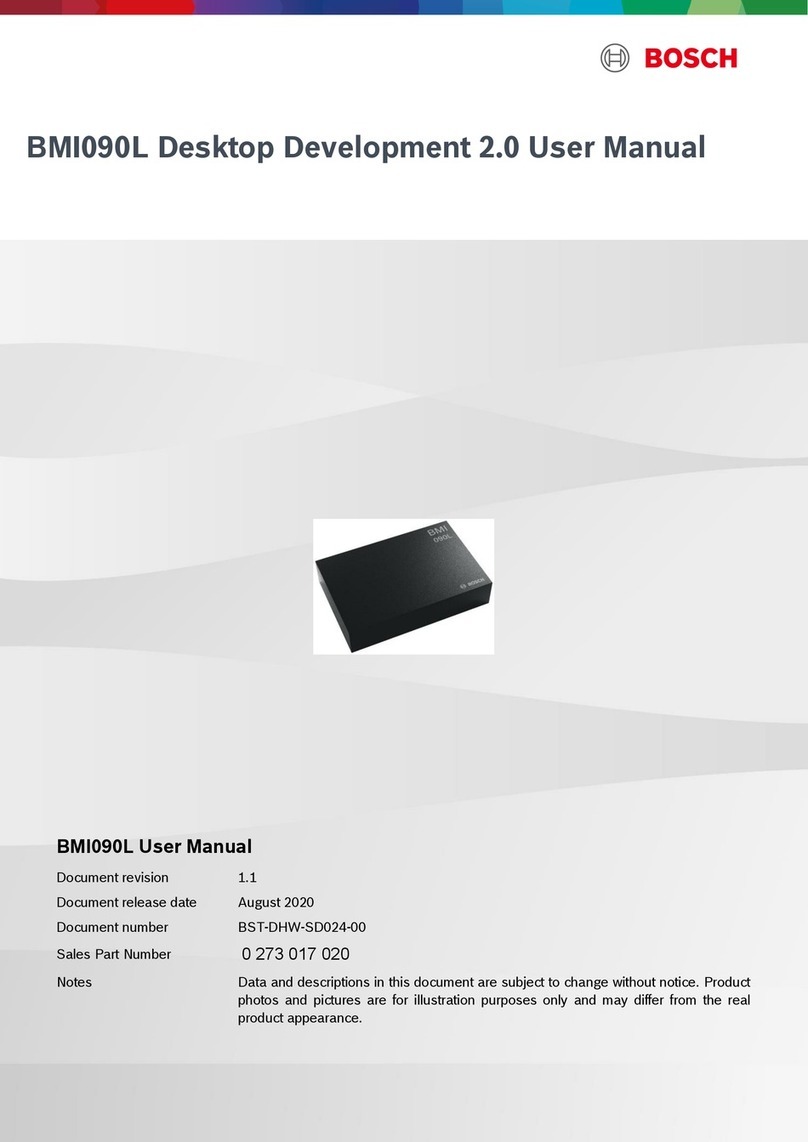
Bosch
Bosch BMI090L User manual
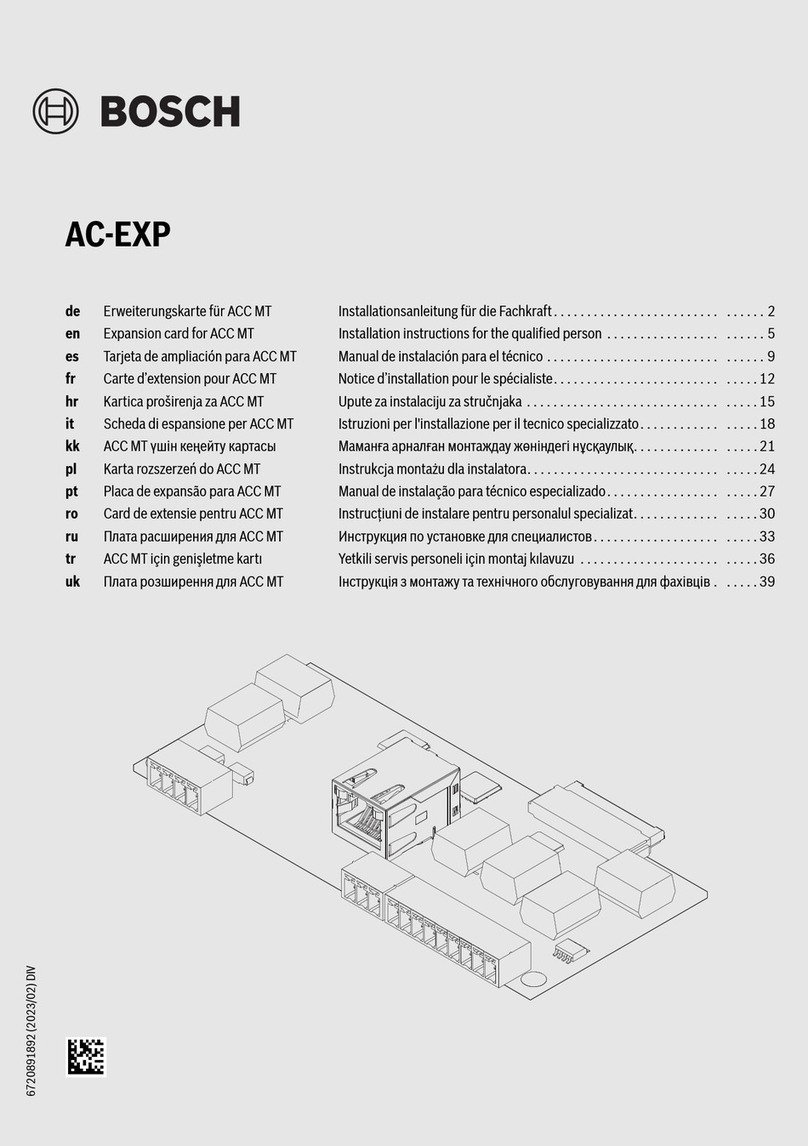
Bosch
Bosch AC-EXP User manual

Bosch
Bosch LTC 2380 User manual
Popular Computer Hardware manuals by other brands

iWave
iWave iW-RainboW-G37M Hardware user's guide
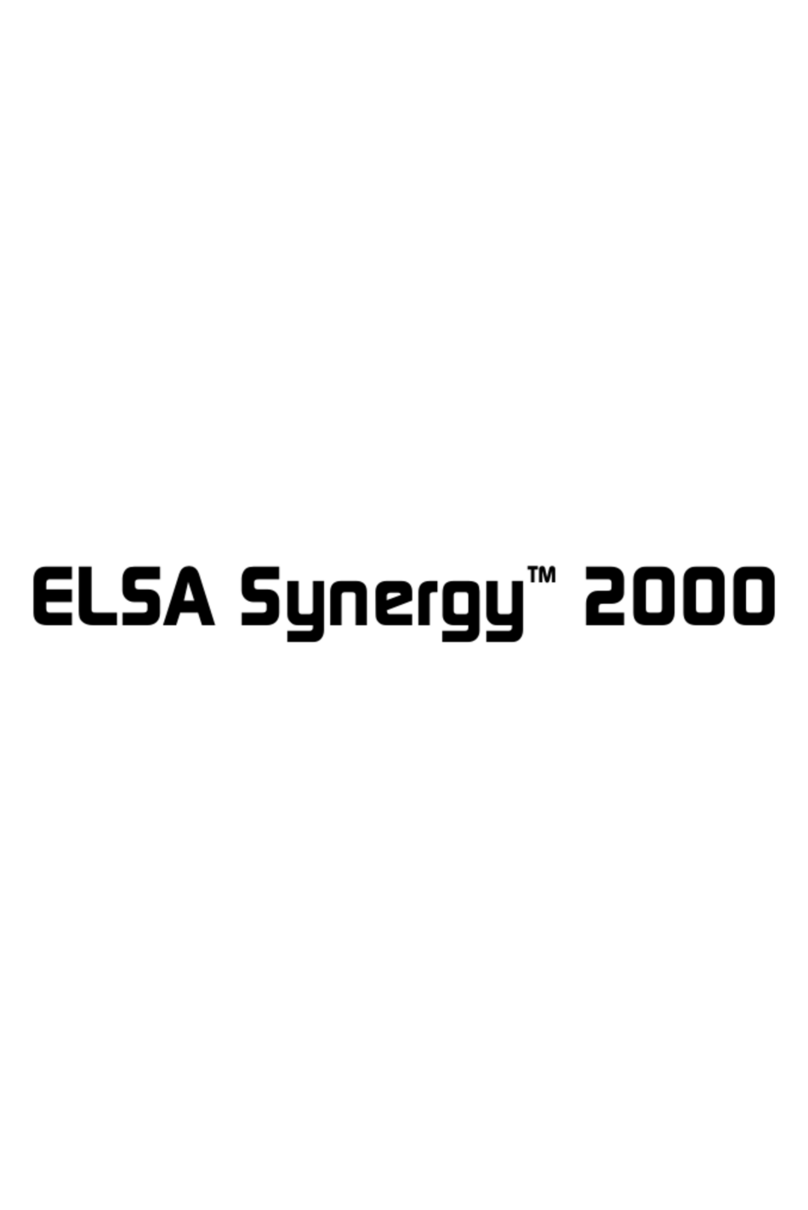
ELSA
ELSA Synergy 2000 manual

Asus
Asus My Cinema-EHD3-100 quick start guide
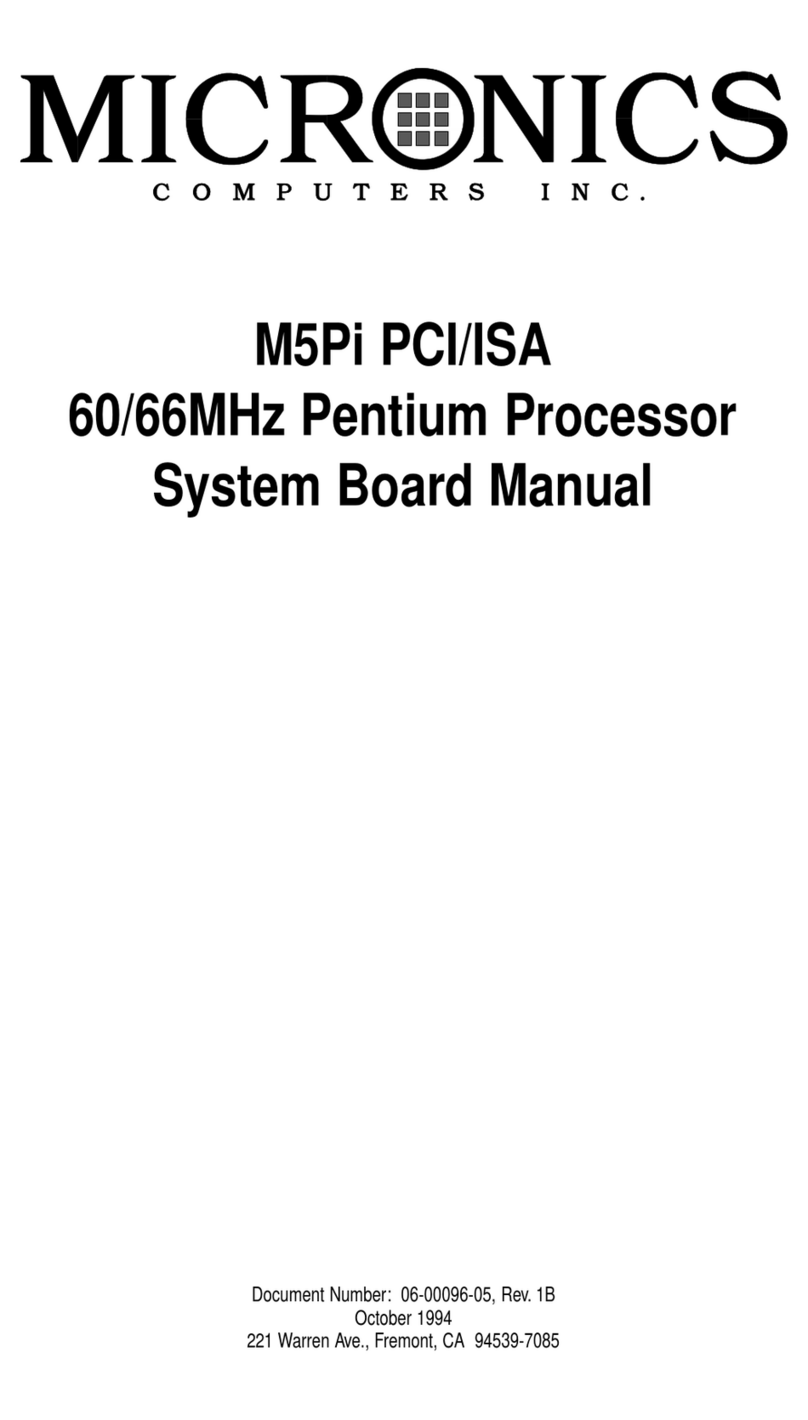
Micronics
Micronics 60/66MHz manual

Atmel
Atmel Dual Triple DMOS Output Drivers with Serial Input and PWM Control... product manual
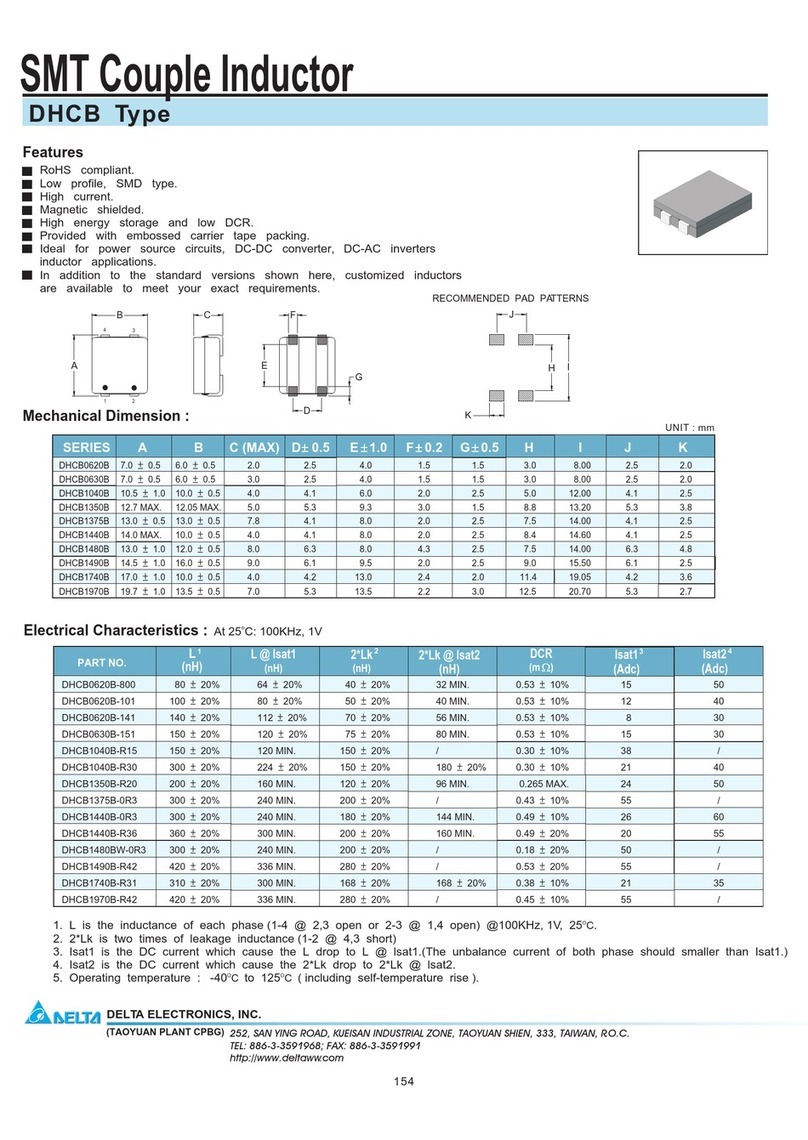
Delta Electronics
Delta Electronics SMT Couple Inductor DHCB Product specifications
